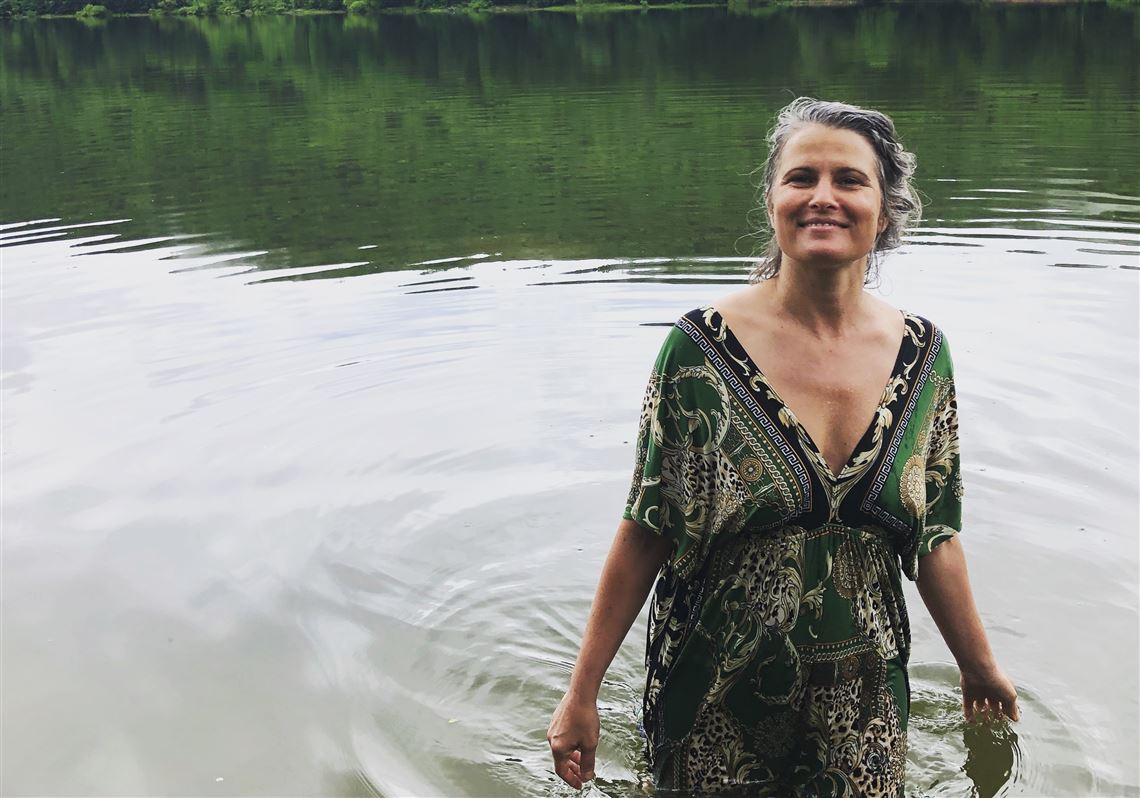Fifty years ago, Dr. Seuss’ beloved Lorax “spoke for the trees” in a brightly colored, sharply worded children’s tale of environmental preservation.
There’s unique power in communicating such messages through allegory and story. Infusing an activist message with narrative elements gives the tale a sense of lore and import. It may be a half century old, but “The Lorax” is still a rhyming seminar for the ages.
So, the Lorax, that orange, mustachioed ragamuffin, speaks for the trees. Who speaks for the rivers?
In Pittsburgh, Brooke Smokelin is both a yogi and a “sound healer,” one who uses vibrational therapy often in tandem with meditation or yoga or acupuncture. It’s a holistic practice that has gained popularity in the last decade alongside Americans’ renewed interest in spiritualism and energy systems. Alternative medicine is a $21 billion industry, according to the business data site statista.com, and it continues to grow by leaps and bounds.
Smokelin describes her practice as “thriving” — she’s taking programs into hospitals and schools in addition to working with individual clients.
Smokelin, a Cornell University graduate, developed a story and myth like “The Lorax.” Rather than a children’s story, however, she built a tale through music that personifies river and sky and earth in a personal sort of creation myth. She has toured with that performance since 1996.
It’s been more than a decade since her last performance, but during the pandemic some soul-searching reminded her of the mission she discovered in a sweat lodge vision: to heal bodies of water through sound.
On June 21, the summer solstice, Smokelin will perform as “Vox Lumina,” the voice of light, in a ritual performance at This is Red, a former church in Homestead. The performance begins at 6:30 p.m. and tickets are $25 at chakrayogahealing.com.
“It’s gonna be me as the minstrel queen sharing this story with people,” Smokelin said, explaining that it’ll just be her and a guitar onstage.
The performance, a folk-like telling of her creation myth, marks the beginning of another tour. Smokelin will take her tale and performance out west beginning in August.
“I think the environmental conversation is missing a spiritual, mythological energy,” she said. “There’s the Lorax, of course, and some things that have impacted the way we think about the natural world. It’s a lofty goal, but I hope ‘Song of Light’ lands somewhere in that world as well.”
Activist ripples
If mythological tales and musical river cures sound a bit out there, it’s because they are. However, there is a body of research that suggests that environmental messages in concert with the arts can have a greater impact than they would on their own. “How Can Music Help Us to Address the Climate Crisis?”, a February article in Music and Science, explicitly argues as such.
“Using knowledge that has already been gained within the established field of environmental psychology, we have the potential to use our knowledge of the power of music to try to change individuals’ behavior in small ways that collectively address climate change and ultimately, save lives,” it says.
Smokelin’s first performance in 1996 took place on the bank of the Allegheny River. Each performance begins with the playing of a crystal bowl, which then receives the concert and its vibrations. She then returns that water to the source to “activate” the river’s spiritual energies.
She’s taken the process all over the country, activating bodies of water and bringing communities together, typically a few dozen or a few hundred people at a time.
“At the very beginning, I pour water into the crystal bowl, and then that water receives the music, and that water becomes the remedy, the sonic tonic,” she said.
“It’s less about a specific frequency, though I have experimented with change in pH balances. If I had a laboratory I’d be all over this, but I’m a musician and an artist.”
The day after her solstice performance, Smokelin will take the water from the concert to the Monongahela River. Fifty years ago, the Mon was one of the most polluted rivers in the country. This year, it was nominated as a Pennsylvania river of the year in the state Department of Conservation and Natural Resources’ annual competition.
Overall, Pennsylvania consistently ranks poorly for river health, largely due to industrial pollution.
“Rivers are special, not just places to build bridges over and dump waste into,” she said. “And I do think the arts landscape is changing in that there is a genre of environmental art emergent. I think people are looking for new expressions and new ways of rallying people for change.”
Trickling nationally
She’s not the only artist mixing environmentalism and creativity. The National Parks Service has an artist residency program that has hosted more than 100 artists to create works that reflect artists’ experience with the parks.
The Pittsburgh Symphony Orchestra in June released a new recording featuring a work based on “Silent Spring,” a seminal work by Pittsburgh conservationist Rachel Carson. The composer, Steven Stucky, argued in his program notes, “Music cannot — should not attempt to — explain, preach, proselytize, comment on real life. ... It is non-specific, non-semantic, non-representational. My ‘Silent Spring’ is the same: a space in which to contemplate one's own fears, hopes, and dreams.”
In 2015, composer Julia Wolfe’s “Anthracite Fields,” an oratorio for choir and chamber ensemble, won the Pulitzer Prize for music. The work is a tribute to those who worked in Pennsylvania coal mines in the Anthracite region. The list continues.
Smokelin argues that her performances and arts activism isn’t necessarily meant to lead to direct, immediate change.
“I lean into cultivating a deeper relationship with the natural world,” she said. “Talking about nature in a scientific way lives in the academic world. I think this is more unmeasurable because change doesn’t happen in a linear fashion. The connection to the two things might unfold two years from now or five years from now.”
There is also some research probing into specific attitude or action changes relating to musical influences, but these tend to correlate behaviors without any direct evidence of causation. For example, a 2007 article in Psychology of Music titled “Lifestyle correlates of musical preference” notes that fans of soul music are most likely to be vegetarian or vegan, while fans of disco and DJ-based music are least likely to be vegetarian or vegan.
Country and classical music and opera fans are apparently the most likely to recycle.
“How Can Music Help Us to Address the Climate Crisis?” references this study with a cautious suggestion: “Ultimately, it should be possible for environmentally friendly behaviors to be associated with any musical genre, but the existing social tendencies of each genre’s fans might be used to encourage such behaviors.”
But this is even less straightforward than a ritual concert to raise awareness.
For her part, Smokelin’s next river-healing tour will concentrate on the Snake River in Idaho.
“The salmon population out there is in a dire circumstance. ... It’s a huge problem that needs awareness,” she said.
“I wanted to energize the community here in Pittsburgh to the bigger picture of what’s going on with rivers around the country. So that’s why the tour. I’ll be taking the vibrational remedy to the other side of the country.”
Jeremy Reynolds: jreynolds@post-gazette.com or 412-263-1634; twitter: @Reynolds_PG. His work at the Post-Gazette is supported in part by a grant from the San Francisco Conservatory of Music, Getty Foundation and Rubin Institute.
First Published: June 17, 2022, 3:09 p.m.





















